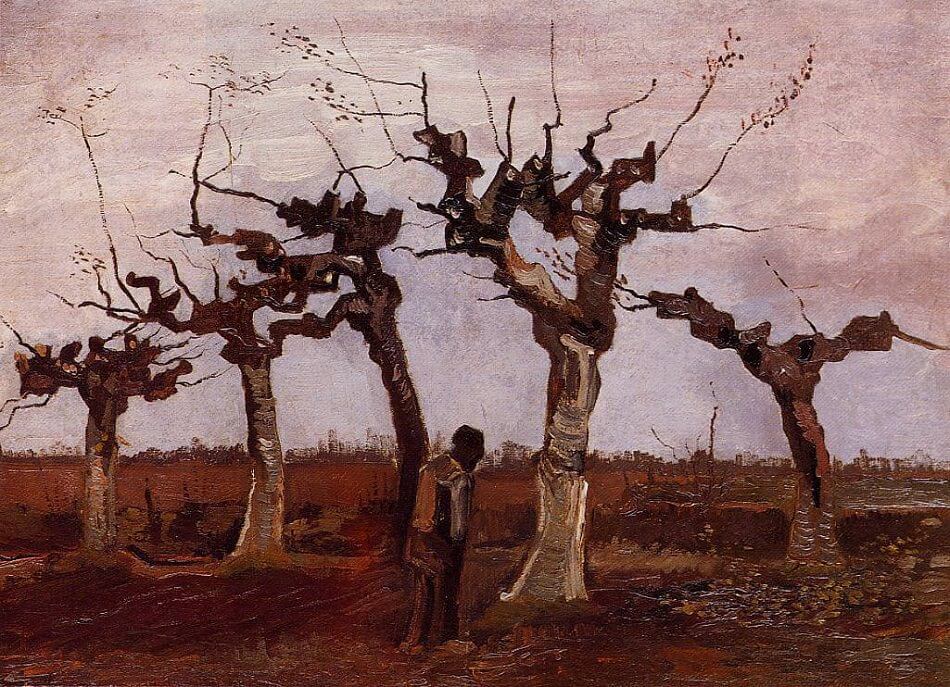Landscape with Pollard Birches, 1884 by Vincent van Gogh

Trees were an important source of inspiration for Van Gogh. Gnarled willows, oaks and beeches are the main motif in some twenty of his drawings and paintings in which Van Gogh's eye found and probed every knotty wound, every stump of a severed limb, every pitiful deformation. It captured the shiny white crinkles of bark as well as each tree's slightly different, asymmetrical lean. And from the black knots that marked the most recent cuts, it caught the upward exultation of new growth - the slender, sun-seeking branches that sprang heavenward from the battered ruin beneath. In painting after painting, Van Gogh used pollard trees to frame a solitary figure tramping a lonely road, their tortured forms reduced to symbolic echoes as he labored fruitlessly over the figures that he loved and the feelings he longed to share.
In a letter to Theo from 1882 Van Gogh revealed that he saw 'something like a soul' in trees. He must have been similarly inspired when he depicted these expressive, rather tragic-looking pollarded birches.




















